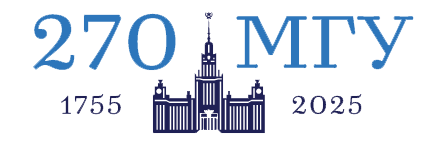You are here
Laboratory of Computational Electrodynamics
Head of the laboratory: Ilyinsky Anatoly , Academician of RANS, Professor, Dr.Sc.
The Laboratory of Computational Electrodynamics was organized in 1969 as a department of the Computing Center at the Faculty of Mechanics and Mathematics of the Moscow State University. It implemented a plan of important studies oriented on the development of mathematical methods and on the computer-aided solving of applied electromagnetics problems. Since 1970, the laboratory is a unit of the Faculty of Computational Mathematics and Cybernetics.
Staff members:
- Eremin Yury, Leading Research Fellow, Dr.Sc.
- Salnikov Alexey, Leading Research Fellow, PhD
- Galishnikova Tamara, Senior Research Fellow, PhD
- Efimova Irina, Senior Research Fellow, PhD
- Berezhnaya Irina, Leading Mathematician
Main scientific directions
The main streamline of the Laboratory’s research is mathematical modeling, development and justification of numerical methods for solving problems of the electromagnetic wave theory, and application of these methods in electromagnetics and optics for investigating direct and inverse problems of electromagnetic wave scattering by various objects. Numerical methods are based on the method of discrete sources and the integral equation method. Both stationary and nonstationary problems are considered. The research that is carried out at the Laboratory is applied for calculating and designing antennas, radio waveguides, and dielectric and strip transmission lines as well as for analyzing reflection by irregular medium interfaces occurring during an electromagnetic sounding of the Earth’s surface. The Laboratory gives base for the practical training of students of the Faculty of Computational Mathematics and Cybernetics.
Main publications:
Monographs:
- Yu.Eremin, A.Doicu and Th.Wriedt, Acoustic and electromagnetic scattering analysis using discrete sources // Academic Press, 2000.
- Yu.Eremin, A.Doicu and Th.Wriedt, Light scattering by systems of particles. Null-field method with discrete sources - Theory and Programs // Springer Verlag, Berlin, 2006.
Reviews:
- Yu.Eremin, E.Eremina, and Th.Wriedt, Computational nano-optic technology based on discrete sources method (review) // J. Modern Opt., vol. 58, no. 5-6, pp. 384-399, 2011.
- Yu.Eremin and A.G.Sveshnikov, Mathematical models in nanooptics and biophotonics problems on the base of Discrete Sources Method // Comput. Maths. Math. Phys., vol. 47, no. 2, pp. 262-279, 2007.
- Yu.Eremin, The method of discrete sources in electromagnetic scattering by axially symmetric structures // J. Commun. Techn. Electron., vol. 45, suppl. 2, pp. S269-S280, 2000.
- A.S.Il’inskii and T.N.Galishnikova, Mathematical modeling of the reflection of a planar electromagnetic wave from a wavy surface // J. Commun. Techn. Electron., vol. 44, no. 7, pp. 717-730, 1999.
- T.N.Galishnikova, A.S.Il’inskii and I.V.Berezhnaya, Comparison of two mathematical models with respect to comparison in the problem of diffraction of an H-polarized wave irregular media interface // Mosc. Univ. Comput. Math. Cybern., no. 1, pp. 6-12, 2001.
- T.N.Galishnikova and A.S.Il’inskii, Scattering of the electromagnetic field on a finite impedance section of an interface // Computational Mathematics and Modeling - Plenum Publishing Corp., N-Y, vol. 19, no. 2, pp. 176-185, 2008.
- A.S.Il’inskii and T.N.Galishnikova, The integral equation method in problems of diffraction by a finite impedance section of a medium interface // Mosc. Univ. Comput. Math. Cybern., no. 4, pp. 187-193, 2008.
- E.N.Vasil’ev and I.G.Efimova, Electric currents on ideally conducting body of revolution during transient diffraction // Radiophysics and Quantum Electronics, vol. 27, no. 1, pp. 66-73, 1984.
- I.G.Efimova and Z.V.Segel’nikova, Diffraction of an electromagnetic signal on an ideally conducting cone with a dielectric coating. Computational Mathematics and Modeling, Plenum Publishing Corp. N-Y, vol. 10, no. 3, pp.249—253, 1998.
- I.G.Efimova, The uniqueness of a solution to the time-domain integral equation for the nonstationary diffraction problem // J. Commun. Techn. Electron., vol. 53, no. 12, pp. 1399-1401, 2008.
- A.S.Il’inskii and I.G.Efimova, The equivalence theorem for the vectors of nonstationary electromagnetic field intensities in a conducting medium // J. Commun. Techn. Electron., vol. 56, no. 2, pp. 125-133, 2011.
- A.S.Il’inskii and I.V.Berezhnaya, Mathematical models of thin dipole antennas. Computational Mathematics and Modeling // Plenum Publishing Corp., N-Y, vol. 1, no. 3, pp. 301–316, 1990.
- A.S.Il’inskii, I.V.Berezhnaya, et al., Investigations of HF and VHF ground-based antennas for communication system // Electromagnetics, vol. 19, no. 2, pp. 171–185, 1999.
Recent papers:
- E.Eremina, Y.Eremin, N.Grishina and T.Wridt, Total internal reflection microscopy: examination of competitive schemes via discrete source method // J. Opt. A: Pure Appl. Opt., vol. 12, no. 095703, 2010.
- A.N.Salnikov, A data-flow modification of the MUSCLE algorithm for multiprocessors and a web interface for it // Advances in Parallel Comput., vol. 19, pp. 143-149, 2010.
- A.S.Ilinski and Yu.G.Smirnov, Method of pseudodifferential equations for electromagnetic screen problem in 3D // Proc. of the Intern. Conf. "Integral Equations-2010". Lviv: PAIS, pp. 56-59, 2010.
- Yu.Eremin, E.Eremina, N.Grishina and T.Wriedt, Extreme scattering effect: light scattering analysis via the discrete sources method // J. Quant. Spectrosc. and Radiat. Transfer., vol. 112, no. 11, pp. 1687-1696, 2011.
- N.Grishina, E.Eremina, Yu.Eremin and T.Wriedt, Modelling of different TIRM setups by the discrete sources method // J. Quant. Spectrosc. and Radiat. Transfer., vol. 112, no. 11, pp. 1825-1832, 2011.
- V.Schmidt, R.Schuh, T.Wriedt, and Yu.Eremin, Preconditioning techniques for iterative solvers in the discrete sources method // J. Quant. Spectrosc. and Radiat. Transfer., vol. 112, no. 11, pp. 1705-1710, 2011.
- R.Schuh, V.Schmidt, T.Wriedt, and Yu.Eremin, Implementation and investigation of iterative solvers in the discrete sources method // J. Quant. Spectrosc. and Radiat. Transfer., vol. 112, no. 11, pp. 1697-1704, 2011.
- A.Salnikov, D.Andreev, and R.Lebedev, The analysis of cluster interconnect with the network_tests2 toolkit // Recent Advances in the Message Passing Interface. Lecture Notes in Computer Science., Berlin: Springer, no. 6960, pp. 160-169, 2011.
- K.V.Romanenkov and A.N. Salnikov, Comparison of quality and performance of parallel algorithms for multiply sequence alignment (pp. 318-319) [PDF]
(http://mccmb.belozersky.msu.ru/2011/mccmb11.pdf).
Recent publications:
• 2013
- Baryshev A.V., Eremin Yu.A. Justification of an integro-functional method for the analysis of plasmonic structures // Differential Equations. 2013. 49. N 9. P. 1126-1133.
- Eremin Yu.A., Grishina N.V., Eremina E., Wriedt T. Analysis of plasmonic resonances of two paired noble metal spheroids via the discrete sources method // J. Modern Optics. 2013. 60. N 7. P. 529-537.
- Eremin Yu.A., Sveshnikov A.G. Employing fictitious particles under investigation of scattering properties of an undistinguished substrate defects // Moscow University Physics Bulletin. 2013. 67. N 6. P. 8-13.
- Grishina N.V., Eremin Yu.A., Sveshnikov A.G. Analysis of spatial resonances in the field of evanescent waves by the discrete source method // Optics and Spectroscopy. 2013. 115. N 1. P. 119-124.
- Il'inskii A.S., Galishnikova T.N. Investigation of diffraction of an electromagnetic wave arbitrarily incident on a locally inhomogeneous medium interface // J.Commun. Technology and Electronics. 2013. 58. N 1. P. 40-47.
• 2012
- Eremin Y., Eremina E., Grishina N., Wriedt T. Investigation of the plasmonic resonance of two coupled spheroids by the discrete sources method // J. Comput. Theor. Nanosci. 2012. 9. N 3. P. 469-478.
- Eremina E., Eremin Y., Grishina N., Wriedt T. Analysis of the extreme scattering effect for particles inside and above a noble metal film via discrete sources method // J. Optics 2012. 14. N 015001. P. 1-11.
- Eremina E., Eremin Y., Grishina N., Wriedt T. New scheme of the discrete sources method for investigation of a near field enhancement by coupled particles // Comput. Phys. Commun. 2012. 183. N 8. P. 1753-1759.
- Grishina N.V., Eremin Yu.A., Sveshnikov A.G. Analysis of plasmon resonances of closely located particles by the discrete sources method // Optics and Spectroscopy. 2012. 113. N 4. P. 440-445.
- Grishina N.V., Eremin Yu.A., Sveshnikov A.G. Analysis of scattering properties of embedded particles by applying the discrete sources method // Comput. Math. and Math. Phys. 2012. 52. N 9. P. 1295.
- Il’inskii A.S. Justification of the spectral method for calculating the propagation con of waveguides and microstrip and slotted lines // J. Commun. Technology and Electronics. 2012. 57. N 9. P. 1009-1015.
- Salnikov A.N., Andreev D.Yu., Lebedev R.D. Toolkit for analyzing the communication environment characteristics of a computational cluster based on MPI standard functions // Moscow University Comput. Mathematics and Cybern. 2012. 36. N 1. P. 41-49.
- Ilinskii A.S., Galishnikova T.N. Singular integral equations in tasks of modelling scattered waves in heterogeneous environment // European Science and Technology: Materials of the Intern. Research and Practice Conf. V.1. Wiesbaden, Germany: Bildungszentrum Rodnik e.V., 2012. P. 21-28.
- Ilyinsky A.S., Karchevskiy Ev.M. Integral equation method in optical waveguide theory // Progress in Electromagnetics Research Symp. Proc. Cambridge, UK: The Electromagnetics Academy, 2012. P. 135-139.



